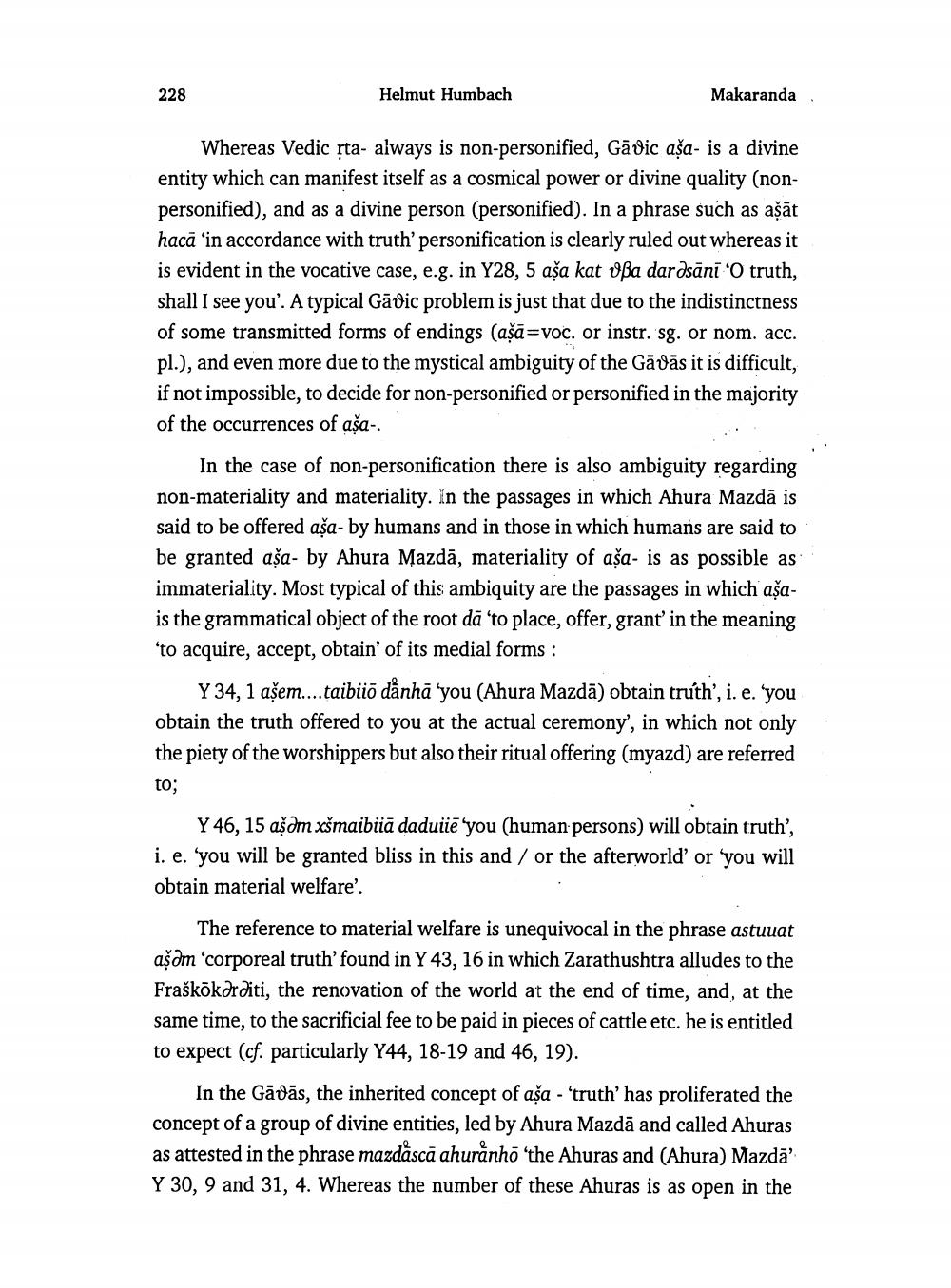________________
228
Helmut Humbach
Makaranda
Whereas Vedic rta- always is non-personified, Gā Vic aša- is a divine entity which can manifest itself as a cosmical power or divine quality (nonpersonified), and as a divine person (personified). In a phrase such as ašāt hacā ‘in accordance with truth' personification is clearly ruled out whereas it is evident in the vocative case, e.g. in Y28, 5 aša kat opa dardsāni “O truth, shall I see you'. A typical Gāvic problem is just that due to the indistinctness of some transmitted forms of endings (ašā=voc. or instr. sg. or nom. acc. pl.), and even more due to the mystical ambiguity of the Gādās it is difficult, if not impossible, to decide for non-personified or personified in the majority of the occurrences of aša-.
In the case of non-personification there is also ambiguity regarding non-materiality and materiality. In the passages in which Ahura Mazdā is said to be offered aša- by humans and in those in which humans are said to be granted aša- by Ahura Mazdā, materiality of aša- is as possible as immateriality. Most typical of this ambiquity are the passages in which ašais the grammatical object of the root dā 'to place, offer, grant' in the meaning 'to acquire, accept, obtain' of its medial forms:
Y 34, 1 ašem....taibiio dànhā you (Ahura Mazdā) obtain truth', i. e. you obtain the truth offered to you at the actual ceremony', in which not only the piety of the worshippers but also their ritual offering (myazd) are referred to;
vad
Y 46, 15 ašām xšmaibiiā daduiie 'you (human persons) will obtain truth', i. e. you will be granted bliss in this and / or the afterworld' or you will obtain material welfare'.
The reference to material welfare is unequivocal in the phrase astuuat ašom 'corporeal truth' found in Y 43, 16 in which Zarathushtra alludes to the Fraškökərditi, the renovation of the world at the end of time, and, at the same time, to the sacrificial fee to be paid in pieces of cattle etc. he is entitled to expect (cf. particularly Y44, 18-19 and 46, 19).
In the Gādās, the inherited concept of aša - 'truth' has proliferated the concept of a group of divine entities, led by Ahura Mazdā and called Ahuras as attested in the phrase mazdăscă ahurånho 'the Ahuras and (Ahura) Mazdā’ Y 30, 9 and 31, 4. Whereas the number of these Ahuras is as open in the




